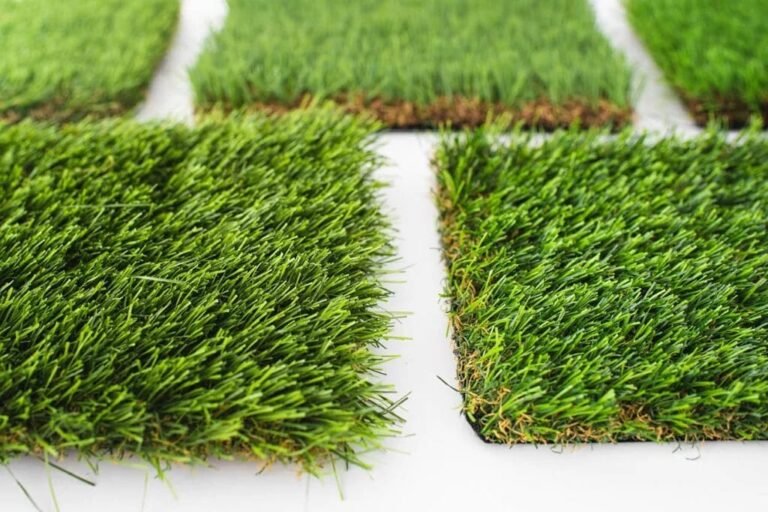Artificial turf is a surface of synthetic fibers made to look like natural grass. It is available in many different options with varying weights, densities, and heights. A thorough understanding of the terms related to this landscaping material can help landscapers and architects select a suitable turf product for their projects. Here are some terms related to artificial turf:
Face Weight
Face weight refers to the total weight of the turf fibers and is measured in ounces per square yard. A higher face weight usually means more fibers are packed into the turf, making it more durable and resilient to heavy use and foot traffic. This is beneficial for sports fields and high-traffic areas.
Density
The density refers to the number of blades in the artificial turf and how closely they sit together. Higher density means more fibers are present in a given area, resulting in a fuller, more lush appearance that closely resembles natural grass. Dense artificial grass may feel softer and more comfortable underfoot.
Pile Height
Just like in carpeting, the pile height of turf refers to the length of the fibers or blades. Short-pile turf options may provide better playability in areas like playgrounds, pet runs, or sporting areas. Higher-pile products are suitable for enhanced aesthetics when replicating the appearance of natural grass or for higher comfort areas such as lawns or patios.
Thatch
Thatch is an additional fiber layer beneath the primary grass blades. It can have varying colors and textures, adding depth to the artificial turf. Thatch may be woven into the primary layers of the turf to help mimic the look of roots found in natural grass.
Backing
Backing serves as the foundation of the turf, providing structural integrity, stability, and support. The quality and type of backing can impact the artificial turf’s durability and overall performance. Some backing materials are made from eco-friendly materials like soy. This feature can help enhance the turf product’s recyclable properties. Effective backing also includes drainage properties that allow water to pass through the turf easily, preventing water from pooling and promoting a dry, usable surface. This is key for outdoor installations subject to rain.
Aggregate Base
The installation of artificial turf requires a layer of substrate material, such as compacted sand, gravel, or rocks. This aggregate base plays a role in drainage, aesthetics, and durability. It helps make sure the turf remains level and firm over time. Installing a stable and well-drained foundation may extend the lifespan of the artificial turf, preventing issues like sagging and pooling water.
Infill
Infill is a layer of material spread over the turf after installation to fill in the gaps, achieve a natural look, and keep the turf in place. It can be made of various materials, including silica sand, cork, crumb rubber, and thermoplastic. The material choice for infill affects the final application. Some infill materials can help reduce the surface temperature of turf, making it cooler and more comfortable in hot weather. Others provide a cushioning effect, making the surface softer and more comfortable to walk or play on. This can be useful for sports fields and playgrounds, where impact absorption may reduce the risk of injuries.
Learn More About Artificial Turf
Each artificial turf option and material choice affects the quality and durability of the final application. Before ordering turf, landscapers should understand the intended use and evaluate factors such as traffic levels, drainage, heat exposure, and aesthetics. Pet area turf can have different properties than putting green turf, making it more suitable for its specific application. Contact a reliable turf supplier and installer today to learn more about their various synthetic landscaping products
